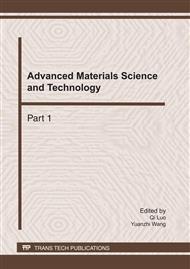p.604
p.611
p.617
p.623
p.629
p.636
p.642
p.647
p.651
A Novel Preconditioned Conjugate Gradient Image Reconstruction Algorithm for Electrical Capacitance Tomography System
Abstract:
To solve the‘soft-field’nature and the ill-posed problem in electrical capacitance tomography (ECT)technology, a novel preconditioned conjugate gradient algorithm for electrical capacitance tomography is presented. The analysis of the basic principles of electrical capacitance tomography, based on the given preconditioned conjugate gradient method and calculation formula of the iteration steps of the ECT and to explore the feasibility of application of the algorithm, the algorithm to meet the convergence conditions and the reconstruction image error. Experimental results and simulation data indicate that the algorithm can provide high quality images and favorable stabilization compared with LBP,conjugate gradient algorithms in simple flow pattern and this new algorithm presents a feasible and effective way to research on image reconstruction algorithm for Electrical Capacitance Tomography System.
Info:
Periodical:
Pages:
629-635
Citation:
Online since:
January 2011
Authors:
Price:
Сopyright:
© 2011 Trans Tech Publications Ltd. All Rights Reserved
Share:
Citation:


